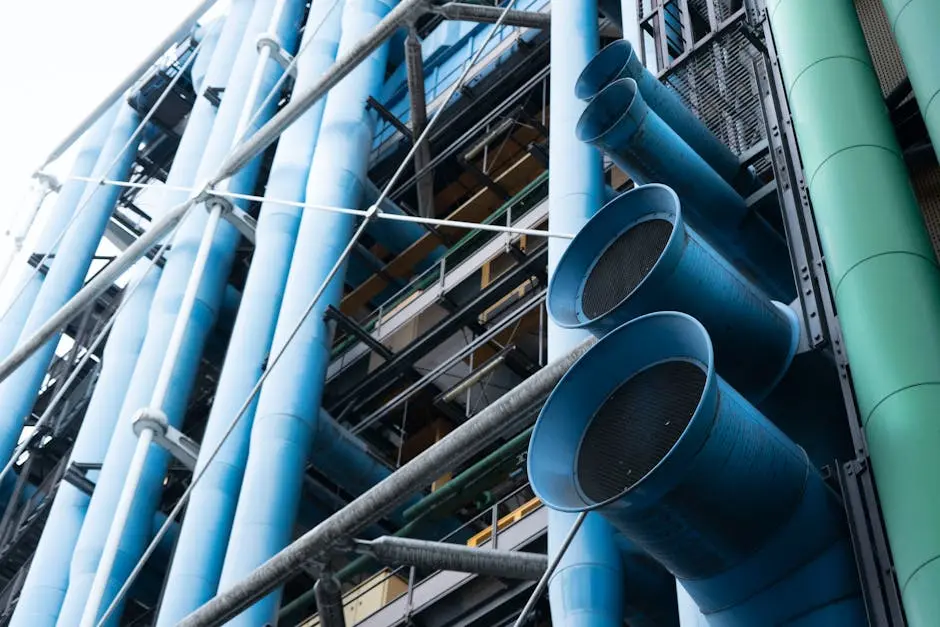
Eco-Friendly Living: Why Choose a Ductless Air Conditioner
Share
In today’s world, making eco-friendly choices is more important than ever. Many are turning to alternatives that not only reduce their carbon footprint but also enhance their comfort at home. One such option is the ductless air conditioner. Join me as we explore the reasons why this cooling solution is a great choice for those committed to an environmentally conscious lifestyle.
Understanding Ductless Air Conditioners
Ductless air conditioners, also known as mini-splits, are a modern solution designed to deliver climate comfort without the need for extensive ductwork. They consist of an outdoor unit connected to an indoor unit, allowing for targeted cooling of individual rooms. This targeted approach is especially beneficial for homes that lack existing duct systems or in situations where extending ducts is not feasible. Ductless systems can efficiently serve areas like additions, multi-story homes, or smaller apartments, offering a versatile cooling solution.
The primary components of a ductless system are straightforward: the outdoor compressor/condenser unit and one or more indoor air-handling units. These indoor units can be mounted on walls, suspended from ceilings, or positioned as floor-standing models, providing flexibility for interior design. The units are connected by refrigerant lines and electrical wiring, requiring only a small, inconspicuous hole in the wall. This simplicity of design makes installation relatively easy, eliminating the need for complex ductwork that traditionally comes with central air systems.
Energy Efficiency of Ductless Systems
One of the most compelling reasons to choose a ductless air conditioner is its superior energy efficiency. Traditional HVAC systems often suffer from energy losses through the ductwork, which can account for up to 30% of the energy used for cooling. In contrast, ductless systems eliminate these losses by directly delivering conditioned air to the target area. As a result, homeowners can experience significant reductions in their energy bills and carbon footprints.
Furthermore, models like the DIY MRCOOL 12K BTU and 24K BTU mini-split heat pumps are exemplary in energy-saving technologies. These systems are Energy Star certified, meaning they meet strict guidelines for energy efficiency, resulting in standout SEER (Seasonal Energy Efficiency Ratio) ratings. For instance, the 4th Generation MrCool systems offer efficiencies that not only ensure financial savings but also significantly lessen their environmental impact.
Environmentally Friendly Refrigerants
Modern advancements in HVAC technology include the use of environmentally friendly refrigerants in ductless air conditioners. Older systems often employed refrigerants that contributed significantly to ozone layer depletion and had higher global warming potential (GWP). Today’s ductless systems use advanced refrigerants such as R-410A, which is designed to have minimal impact on the environment. This shift not only complies with international environmental standards but also aligns with the eco-conscious ethos of minimizing one’s carbon footprint while maximizing air comfort.
By selecting a ductless air conditioner that uses these types of refrigerants, homeowners can enjoy an additional layer of environmental responsibility. These systems fulfill a crucial role in reducing harmful emissions, contributing to global efforts to combat climate change. Understanding and leveraging these benefits is essential for anyone committed to an eco-friendly lifestyle.
Flexible Installation and Zoning
Another notable aspect of ductless air systems is the flexibility they offer in terms of installation and zoning. Whether you have a single-room apartment or a complex multi-story home, these systems cater to various needs. The zoning capability of ductless systems means that you can set up different climate zones within your home, tailoring the temperature in each room to your preference. According to the Department of Energy, this ability to control temperatures in individual rooms enhances personalized comfort and optimizes energy use, as you only cool areas that are in use.
Adaptability in installation means these systems can fit virtually any home design without disrupting structural aesthetics. Whether it is the compact design of wall-mounted units or the sleek form of floor models, ductless systems blend seamlessly into their surroundings, preserving your interior design integrity. They also support various connection options, from smartphones to remote controls, making them highly convenient for home automation enthusiasts. These features can be experienced firsthand with our DIY Mini-Splits, tailored to meet the modern homeowner’s needs.
Reducing Noise Pollution
A quieter home environment is one of the overlooked benefits of opting for a ductless air conditioning system. Unlike traditional air conditioning units, ductless systems operate with minimal noise, providing a tranquil atmosphere in your living spaces. The quiet operation stems from the fact that the noisy components like the compressor are located outside the home, and the indoor units are designed to be unobtrusive. This feature is especially valuable in urban settings or for those who value peace and quiet as part of their home comfort.
Transitioning to a ductless air system does not mean compromising on power or effectiveness, though. These units deliver robust performance across various settings, ensuring that noise concerns do not detract from their primary function - maintaining a consistently comfortable indoor climate. The reduction in noise pollution is not just a benefit for the home; it also reduces the stress often associated with traditional louder HVAC systems.
Embracing Comfort with Sustainability
Choosing a ductless air conditioner aligns well with the goals of eco-friendly living. Its energy efficiency, flexible installation, and minimal environmental impact make it an ideal choice for the modern, environmentally conscious homeowner. By opting for a ductless solution, you can enjoy comfort without compromising your commitment to sustainability.

